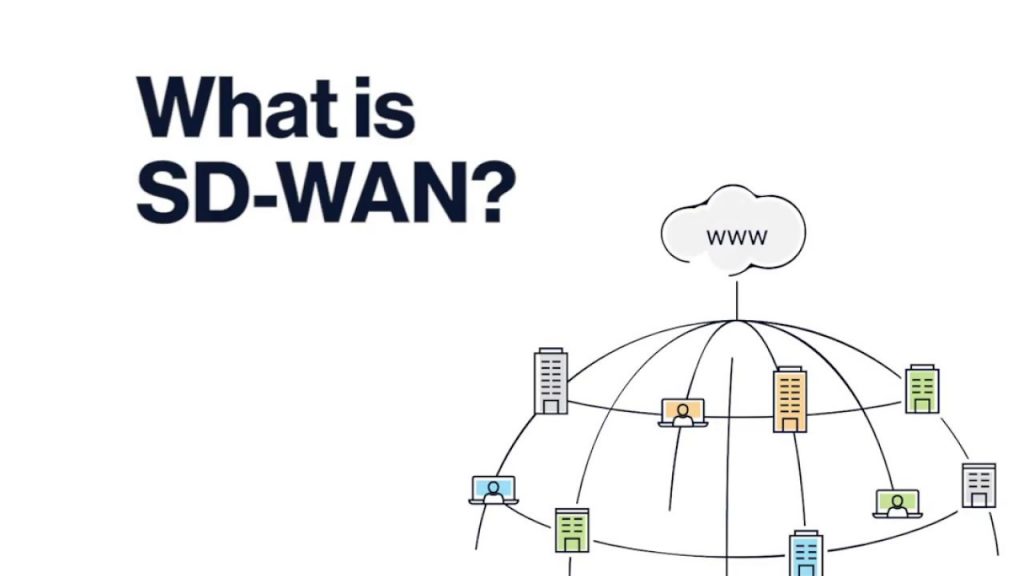The Role of SD-WAN in Modern Network Management

Network management has evolved significantly to keep up with the demands of modern businesses. One of the most impactful technologies driving this evolution is Software-Defined Wide Area Networking (SD-WAN).
This technology is not just a buzzword – it is a crucial component in the toolkit of contemporary network management strategies. If you are wondering what is SDWAN , then you must know more. You can enhance your business’s network performance, increase efficiency, and achieve a level of flexibility previously unattainable with traditional networking solutions.
Essence of SD-WAN Technology
SD-WAN is a virtualised network overlay that simplifies the management and operation of a WAN by decoupling the networking hardware from its control mechanism. This decoupling allows for more centralised management, flexibility, and improved performance. Unlike traditional solutions, which rely heavily on proprietary hardware and are often complex and costly, SD-WAN uses software to route traffic across the most efficient paths intelligently. This innovation enables organisations to optimise their bandwidth usage, reduce latency, and ensure critical applications receive the necessary resources.
Enhanced Performance and Reliability
One of SD-WAN’s key advantages is its ability to enhance network performance and reliability. Dynamic traffic routing across multiple connections ensures that data takes the most efficient route. This not only reduces congestion but also minimises the risk of outages. In the event of a failure on one link, it can seamlessly switch to another, maintaining uninterrupted service. This capability is especially beneficial for businesses with multiple branch locations, where maintaining consistent and reliable connectivity is critical for operations.
Cost Efficiency and Scalability
Traditional WANs can be expensive to set up and maintain due to the reliance on proprietary hardware and dedicated circuits. On the other hand, SD-WAN leverages more cost-effective internet connections without compromising performance. This shift results in significant cost savings in capital expenditure (CapEx) and operational expenditure (OpEx).
Additionally, SD-WAN’s scalable nature means that businesses can easily expand their network as they grow. This can happen without the need for significant infrastructure investments. This scalability is particularly advantageous for organisations in rapidly changing markets, where agility and the ability to quickly adapt to new demands are crucial.
Centralised Management and Control
Another significant benefit is the centralised management and control it offers. Traditional networking solutions often require manual configuration and oversight at each individual site, which can be both time-consuming and prone to errors. With SD-WAN, network administrators can manage the entire network from a single, centralised dashboard. This approach simplifies configuration, monitoring, and troubleshooting, allowing for more efficient network management. Moreover, it provides greater visibility into network performance and usage, enabling more informed decision-making.
Security and Compliance
Security is a paramount concern for any network, and SD-WAN is designed with robust security features to protect data and ensure compliance with regulatory requirements. It includes built-in encryption, secure tunnels, and advanced firewall capabilities to safeguard data as it travels across the network. Furthermore, its centralised management console allows for consistent security policy enforcement across all locations, reducing the risk of vulnerabilities. Comprehensive security features are indispensable for industries subject to strict compliance standards, such as finance and healthcare.
Supporting Digital Transformation
As businesses increasingly adopt cloud-based applications and services, the demands on their networks have grown exponentially. SD-WAN is uniquely positioned to support this digital transformation by providing the necessary bandwidth, performance, and flexibility. Enabling direct access to cloud services and optimising traffic flows ensures that applications run smoothly and efficiently. This capability is essential for businesses aiming to leverage the full potential of digital technologies, from advanced analytics to artificial intelligence.
So, if you are wondering what is SDWAN, it is more than just a technological advancement. It is a fundamental shift in how networks are managed and operated. As organisations continue to embrace digital transformation, the role of SD-WAN in modern network management will only become more critical. It helps in driving innovation and enabling success in an increasingly connected world.







